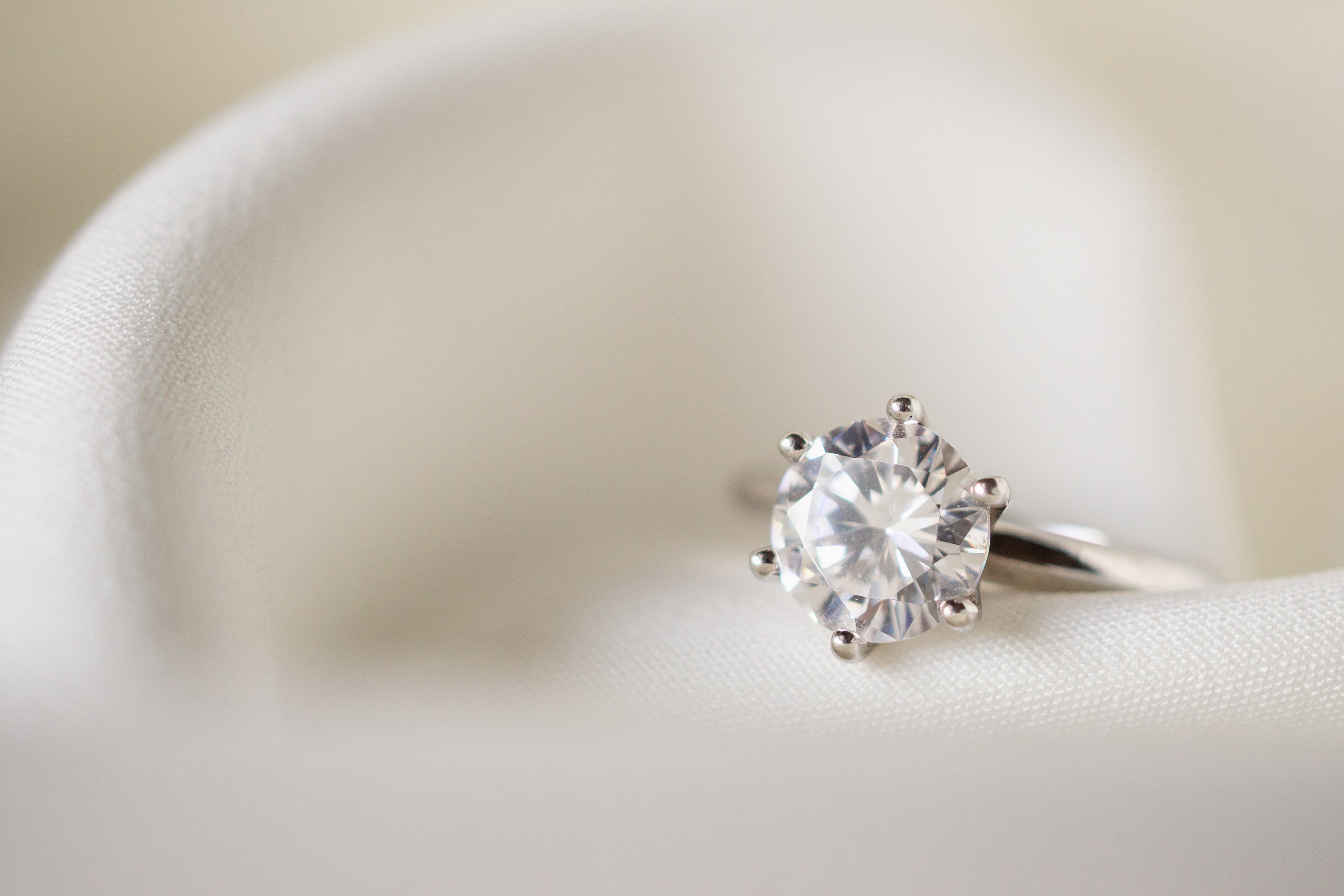Diamonds are for eternity. They are the epitome of radiant beauty and the most popular gemstone for engagement rings. However, they are also very expensive. Are moissanites, on the other hand, a cheaper alternative with similar quality? Here's everything you need to know about the differences between diamond and moissanite.
Moissanite - not of this world
But what is a Moissanite anyway? A moissanite is a gemstone composed of carbon and silicon. So it is not the same as a diamond, which is made of pure carbon. Moissanite was discovered in 1904 by the French chemist Henri Moissan during the examination of a rock sample from a meteorite crater. Natural occurrences are extremely rare, moissanite is only found in impact sites of celestial bodies and occasionally in the vicinity of volcanoes. However, it is now possible to produce gem-quality moissanite in the laboratory - just like diamonds. For this purpose, extremely high pressure and heat are generated, i.e. the High-Pressure-High-Temperature method is used, just like for laboratory diamonds. If you would like to learn more about the manufacturing processes of laboratory diamonds, you can read our blog post on the subject here.
Easy to confuse at first glance
Moissanites are arguably the closest imitation diamond to a real diamond in terms of appearance, and for a comparatively low price. This makes them a popular alternative in the jewellery industry. Nevertheless, moissanites and diamonds differ in some basic characteristics.
Diamonds are the hardest naturally occurring substance in the world, they have a hardness grade of 10 on the Mohs hardness scale. Moissanites, on the other hand, have a value of 9.25. This makes them the second hardest gemstone after diamonds and they are also quite robust and suitable for everyday use.
Unlike diamonds, moissanites are not colourless and are not valued according to their colour. However, if moissanites were to be classified on the same colour scale as diamonds, they would have an average colour of J, which means that they often have a brown tinge that is clearly visible to the naked eye.
Probably the most important distinguishing feature is the birefringence of light in moissanite. With a magnifying glass or under a microscope, you can see that with moissanite, the light that enters the stone is bent and refracted into two rays. In addition, a moissanite sparkles "more colourfully", it has more fire than a diamond. This means that it produces more coloured light reflections, whereas the light reflections of a diamond are more white. The fact that a moissanite is faceted differently than a diamond, and therefore refracts less white light, means that its sparkle is less vivid and clear.
Also an attractive alternative in terms of price
Especially if you are on a smaller budget, a moissanite appears to be an enticing alternative to the classic diamond. Moissanites are available for as little as 350 euros for 1 carat, whereas with diamonds you pay a good ten times that for a single carat. The drastically lower price already gives an idea that moissanites hardly have a resale value and thus, unlike diamonds, cannot be used as a financial investment.
Of course, everyone must weigh up for themselves what role the material value plays in comparison to the emotional value. Ultimately, the most important thing is that the wearer likes the piece of jewellery, not that it cost as much as possible.



Share:
Can you tell the difference between a lab-grown diamond and one from the mine?
Series "Quality criteria of a diamond": Carat